Why the M2 Browning Has Been the U.S. Military’s Favorite Gun for Over 100 Years
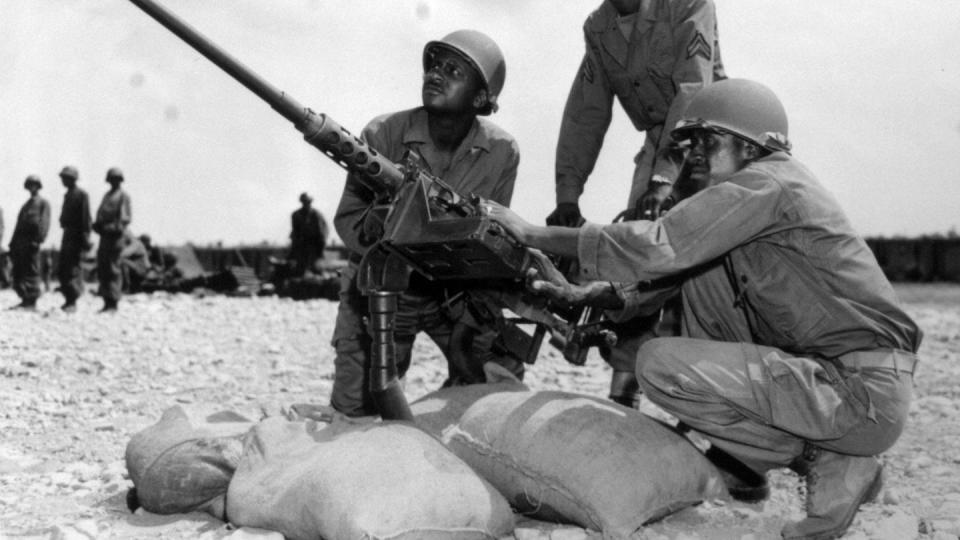
One weapon has continually served the U.S. Armed Forces on land, at sea, and in the air for 105 years: the M2 heavy machine gun.
First developed in 1918, the M2 has been in steady service throughout the 20th and 21st centuries, remaining largely unchanged—to the point where a World War I-era doughboy could sit in front of a modern M2 and immediately know how to operate it. This is the story of how the “Ma Deuce,” as it’s affectionately known, became one of the most durable, long-lasting weapon designs in modern history.
Made for the Trenches
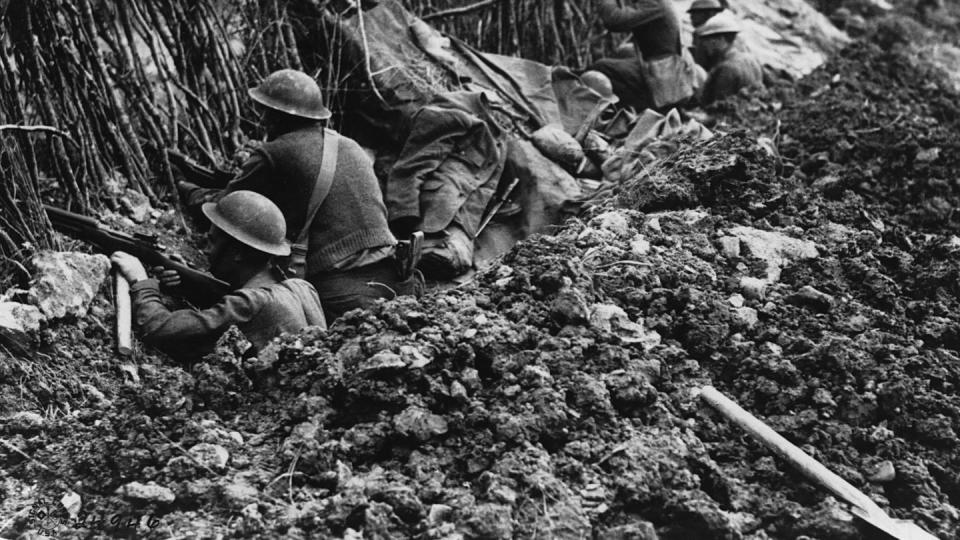
In 1917, the United States entered World War I. With both the Allies and Central Powers more or less evenly matched, the war had become so bogged down that it morphed into a muddy slugfest; neither side could budge the other, and both had settled into opposing lines of trenches that stretched from the North Sea to the Swiss border. Despite having watched the previous three years of war with horror and alarm, U.S. forces were still ill-equipped, lacking the new weapons of war, including machine guns, aircraft, and tanks.
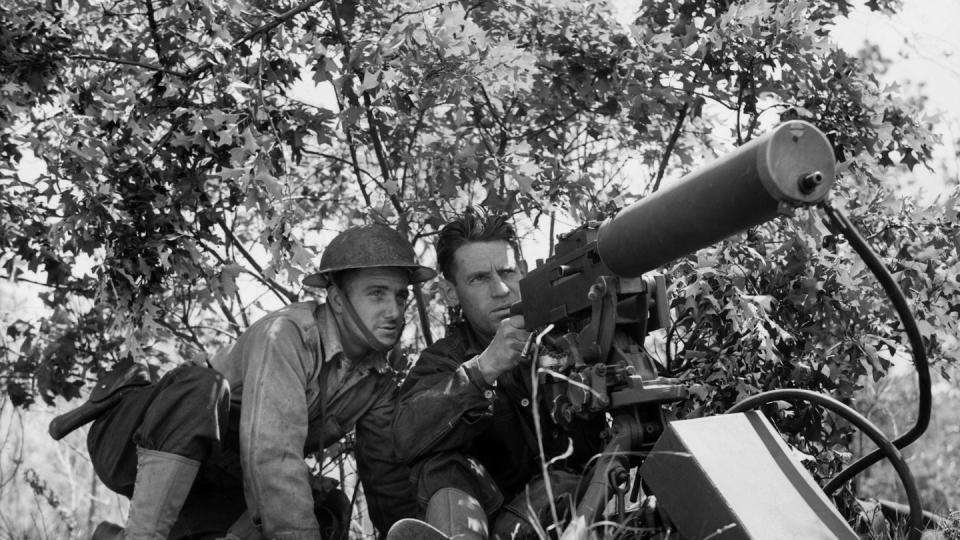
One weapon the U.S. Army did have was the M1917, a.30-caliber medium machine gun. Featuring a rate of fire of 450 rounds per minute and a water-filled sleeve to cool the barrel, the machine gun was approved in 1917 and rushed into service. But the M1917 fired the same.30-06 round as the M1903 infantry rifle, and lacked the range and punch to take on high-flying aircraft or penetrate the thin armor of early tanks. Gen. John. J Pershing, the commander of the Allied Expeditionary Force, wanted something bigger and more powerful.
John Moses Browning, the inventor of the M1917, was one of the most prolific firearms developers of all time; he invented the M1911.45-caliber handgun, the M1918 Browning Automatic Rifle, and the Browning Auto-5 shotgun, among many others. While other attempts at building an American heavy machine gun faltered, Browning set to work scaling up the M1917 to fire a heavier round: the.50-caliber ball round. On November 18, 1918, seven days after the end of the war, the U.S. government finally tested the new machine gun in both water- and air-cooled versions, using full auto fire.
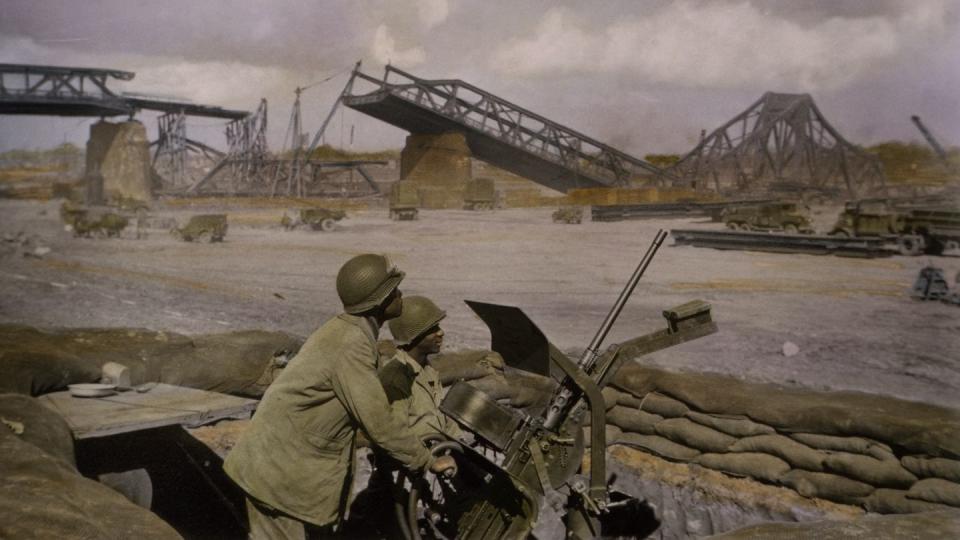
In 1933, a new, redesigned version of the M1921 was type approved as the M2. The M2 included several improvements, including an open hardware architecture “universal” design that meant any particular M2 could be modified for use on aircraft, ships, or by troops on the ground. The design was also simplified to increase the rate of fire and reliability. The air-cooled version of the gun weighed 84 pounds, 18 pounds more than the M1921, but it also included a longer barrel for increased range.
The Power to Penetrate Steel
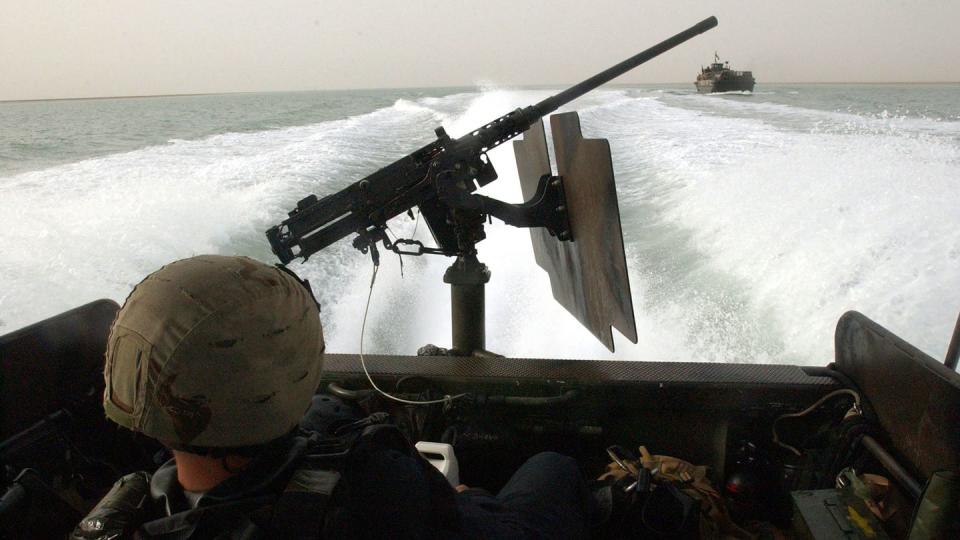
Although troops balked at the weight of the M2 heavy machine gun and the M2.50-caliber round early on, the weapon was unlike anything else in the U.S. arsenal. The transparent power of the M2 means it can penetrate 0.7 inches of rolled homogeneous steel armor—the same type of steel used in tanks and armored vehicles—at 656 yards; it can also penetrate 2 inches of concrete at that distance, 1 foot of sand, or up to 27 inches of clay.
Though more 100 years old, the M2 is still competitive with today’s machine guns. For instance, the M240 machine gun, the successor to the M1917, has a maximum effective range of 2,000 yards. General Dynamics Ordnance and Tactical Systems, the manufacturer of today’s M2s, states the M2 also has a maximum effective range of 2,000 yards, and a maximum range of 7,400 yards, or more than four miles.
The larger, heavier.50-caliber round means the M2, even at maximum effective range, is capable of wreaking much more havoc than the M240. Webster’s Dictionary defines foot-pound as “a unit of work equal to the work done by a force of one pound acting through a distance of one foot in the direction of the force.” The 7.62 x 51-millimeter round the M240 fires generates about 2,500 foot-pounds of force at the muzzle; the.50-caliber round generates exponentially more force, from 11,000 to 15,000 foot-pounds, depending on the ammunition type.
A Century of Warfare
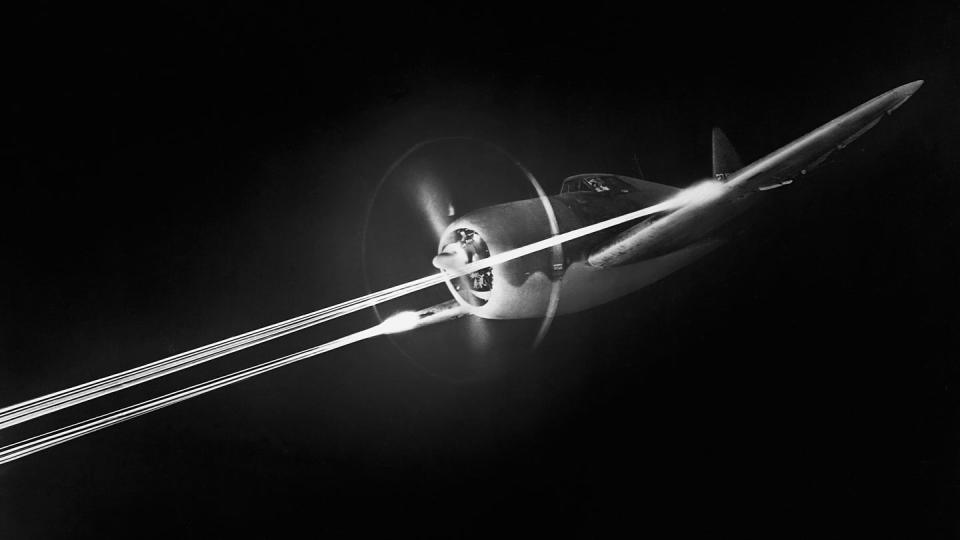
By World War II, all branches of the U.S. Armed Forces had adopted the M2. Although tanks had evolved to become largely invulnerable to the.50-caliber round, it was still useful against lighter armored vehicles and low-flying aircraft. Tens of thousands of M2s were built both for the U.S. military and its allies, and exported abroad under the Lend-Lease Act of 1941.
The M2 was omnipresent in World War II, enthusiastically applied to every vehicle that drove, sailed, or flew. The Army adopted the M2 as the anti-aircraft gun of tanks, halftracks, trucks, tank destroyers, and other vehicles. In the Army Air Force, it served as the main armament of the P-51 Mustang and P-47 Thunderbolt, and as the defensive armament for bombers such as the B-24 Liberator and B-17 Flying Fortress. A single B-17 bomber was equipped with up to 13 M2 heavy machine guns to ward off enemy fighter planes and allow the big bomber to reach its objectives.
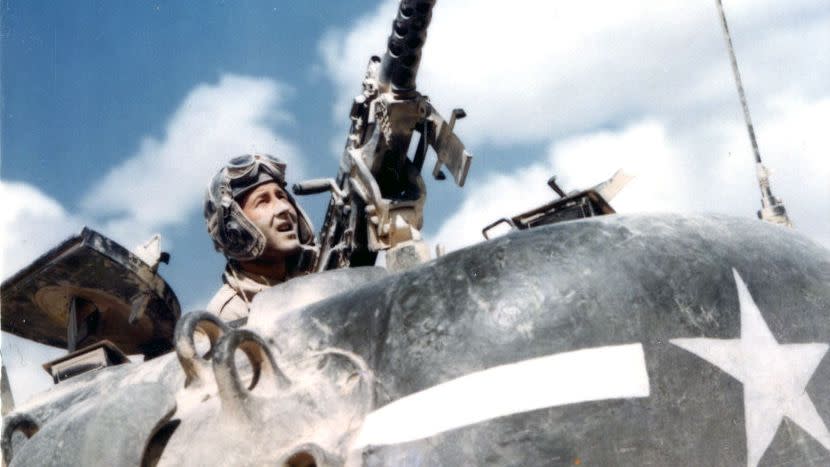
Meanwhile, the Navy used the M2 as an anti-aircraft machine gun on everything from landing craft to battleships, as well as aircraft such as the F4F Wildcat carrier-based fighter and the PBY Catalina flying boat. The Sargo-class submarines, built in the late 1930s, were equipped with two.50-caliber machine guns for self-defense. Even the U.S. Coast Guard’s landing craft were equipped with M2 machine guns, manned by Coast Guardsmen for anti-aircraft and beach suppression roles.
The M2 Today
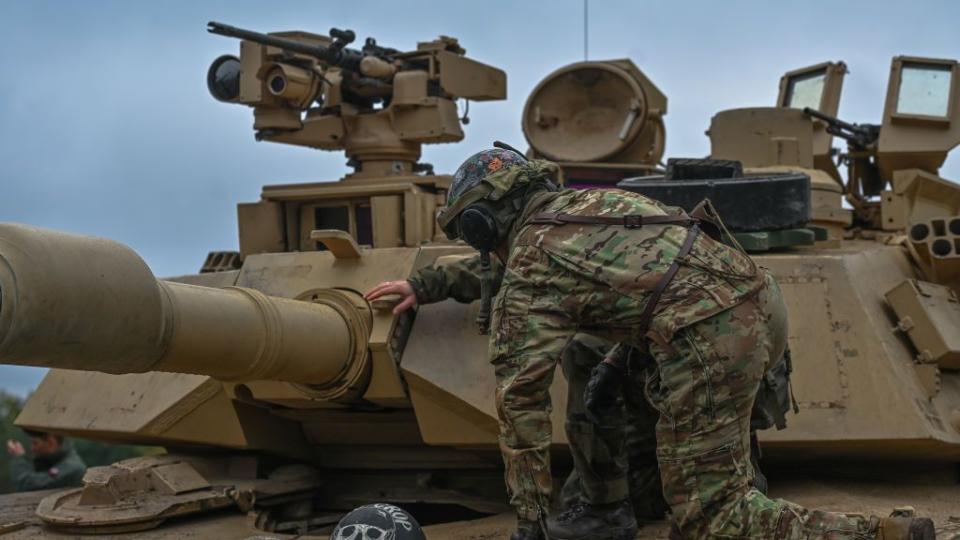
Today, the Army still uses the M2 as a ground crew-served weapon, as well as the commander’s gun on the M1A2SepV3 Abrams main battle tank, where it’s integrated with the CROWS remote weapons system. The Marines also use the M2 as an infantry support weapon, and as the primary armament of the new Amphibious Combat Vehicle. The Navy uses M2 machine guns as deck-fired weapons to repel small boats, aircraft, and drones, while the Air Force uses them from the HH-60G Pave Hawk rescue helicopter, and in a base defense role. The Ukrainian Army is even using the machine gun in its effort to drive out invading Russian forces.
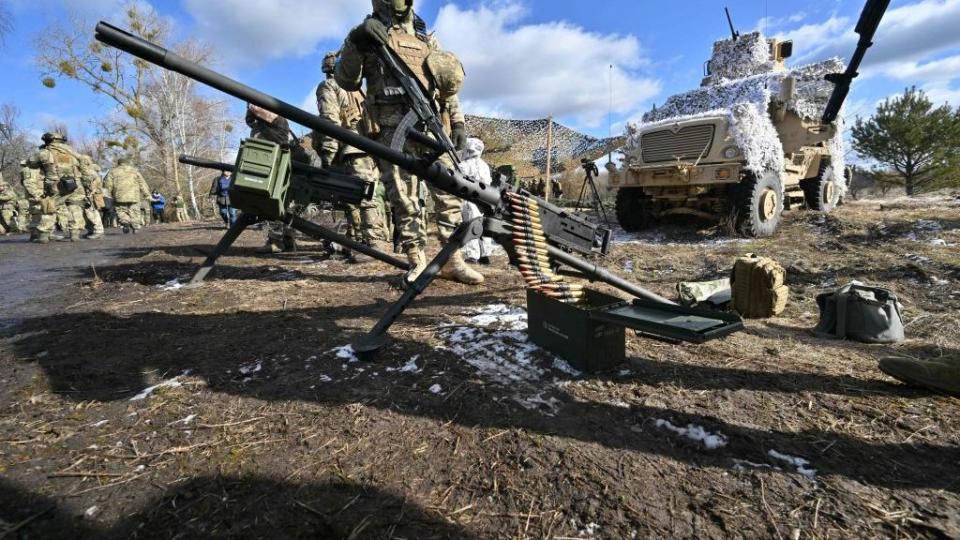
Today’s M2—the M2HB (Heavy Barrel)—is still heavy, clocking in at 84 pounds, but it can fire more ammunition types than the original ball- and armor-piercing rounds. Today, ball, tracer, and armor-piercing rounds, as well as incendiary and saboted light armor penetrator rounds, are all available. The steel barrel includes a cobalt-chromium alloy lining, allowing for a 10,000-round barrel life before a change is necessary.
The advent of drones could extend the M2’s lifespan even further. The threat of fast-moving drone swarms makes a fast-firing, accurate, inexpensive kinetic energy weapon—ideally paired with a detection and tracking system—a battlefield imperative. Whatever that weapon ends up looking like, it likely starts with an M2 heavy machine gun.
The Takeaway
The M2 is more than 100 years old, and has remained largely unchanged in both appearance and function; that’s astonishing considering the vast differences between ships, planes, and aircraft over that same time period. Each generation, the M2 steps into a new role—from tank anti-aircraft gun to helicopter door gun—as though it were designed exclusively for the task at hand.
It has no obvious successor, and the U.S. military is not looking for one. For a weapon of superlatives, that’s the most amazing thing of all.
You Might Also Like
